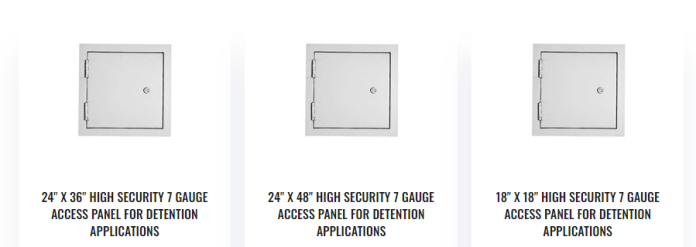You can use access doors in different settings for a multitude of reasons. While their primary purpose is to give access, you can also use them to conceal, protect, and secure various parts or spaces in your residential or commercial establishments. To make investments like these worth more, you need to make sure that you know which type of access door is most beneficial for you and your purpose. Here are things you need to know before you start selecting the access door:
Where Are You Placing It?
When you think about location, many factors come into play, as most of the other requirements of choosing an access door will depend on where you are placing it. If you select an access panel for a residential setting, then a general-purpose access door may already meet all your requirements. It would be different if you chose an access panel for a commercial environment.
For example, if you plan to place it in areas with high fire risk, you can automatically narrow your choices down to fire-rated access doors. Hospitals and operating rooms will need fire-rated doors with additional features like insulation.
If you are placing it in areas that need additional security, you can choose between the security access doors available in the market. They come in different levels, like medium to high-security access doors. Location plays an important role; some access doors come in location-based categories.
What Material Are You Choosing?
Access doors come in different materials, some of which can be heavier. If you want an easy installation, you might want to choose those that come in lighter materials. It would help if you also consider your purpose and needs again.
Since most access doors come with durable materials, either way, you can base your decision on purpose, requirements, and function. Some access doors can also blend better with your walls or ceilings because of their material, and you can consider that as well if you are choosing an access door.
Read more: Insulate The Ceiling Or The Roof? What Works Better?
Do You Have a Specific Size?
You should also know what size you need. While access doors can come with customizable sizes, it would still benefit you to understand what specific size you are looking for. If, for example, you already have the opening cut out on your wall but are still determining what size fits it, you can opt for access doors that can fit irregular openings. You can also measure the hole and ask for the specific size that matches it.
Do You Need Additional Features?
Another thing to consider is the additional features you might need for your access doors. Some access doors have different types of locks and finishes, and some have other features. Additional features include the aesthetics or invisible finish, security, insulation, gaskets, and fire resistance.
Going back to the location requirement, some access doors are perfect for exterior installations, and there are those that you install in your interiors. Depending on what you need and what you are looking for, you can choose an access door that is right for you.
Does Your Area Have Specific Requirements?
Depending on your area or city, you may need specific features and sizes for your access doors. Most commercial buildings will require access doors that have fire-resistant qualities, and some need ones with insulation or acoustic features. You also need to consider specific requirements for access panels that your area or city may have.
Choosing an access door can be easy, especially if you already know what features you are looking for. It will highly depend on your purpose or need and area regulations. Before buying one, you can always ask an expert about the access door you are considering. Seeing access doors as investments will give you more confidence before choosing.



















